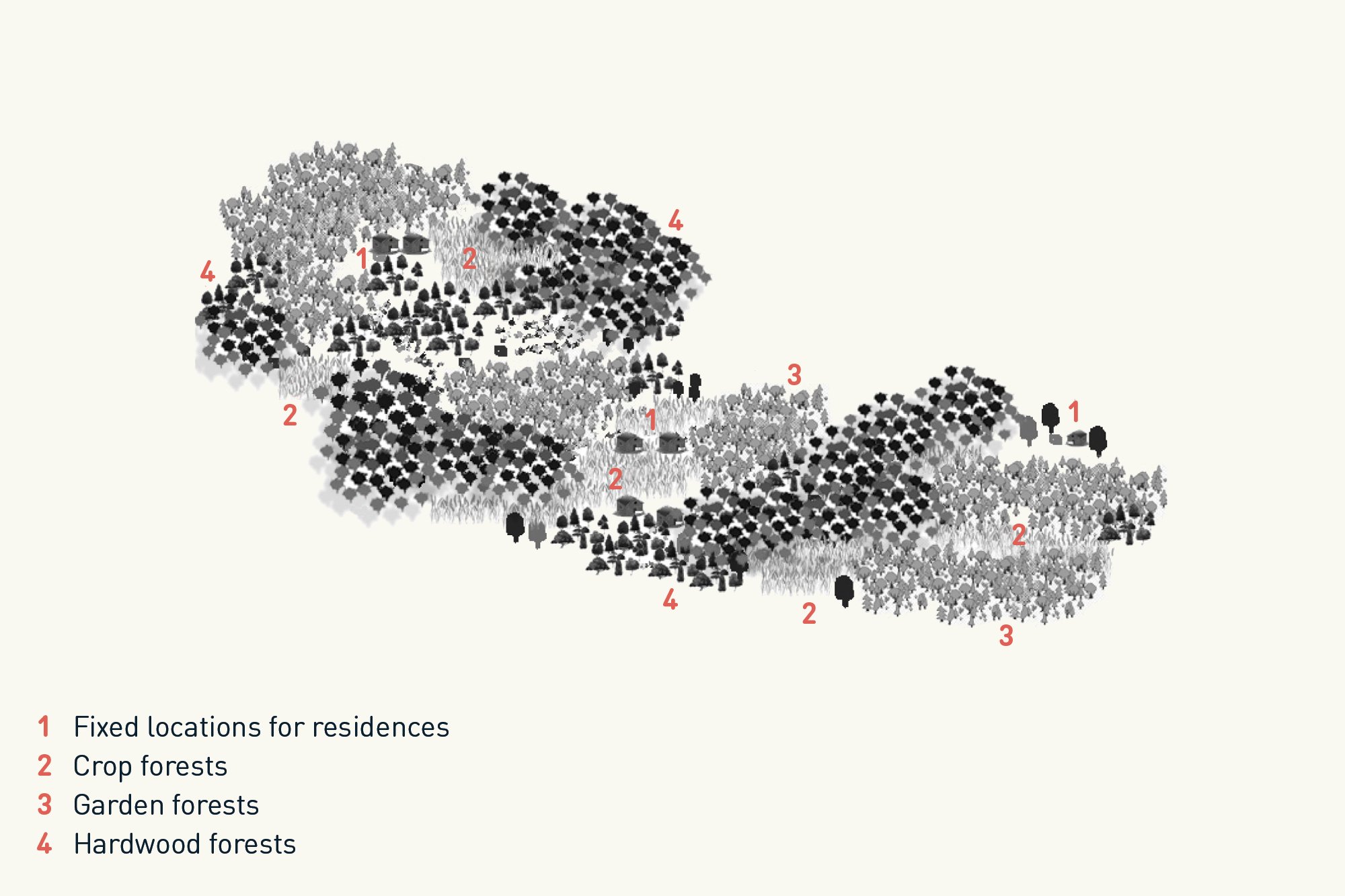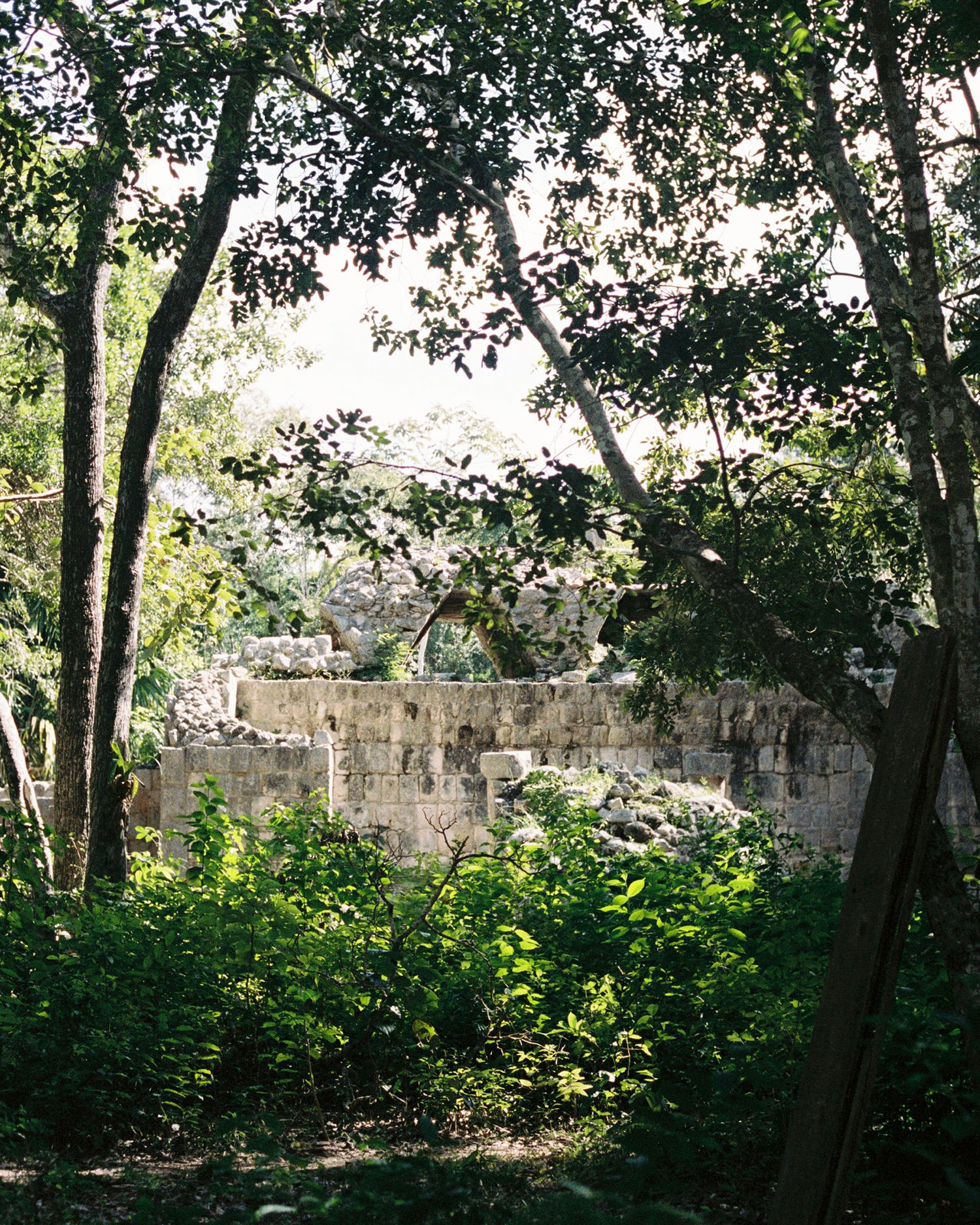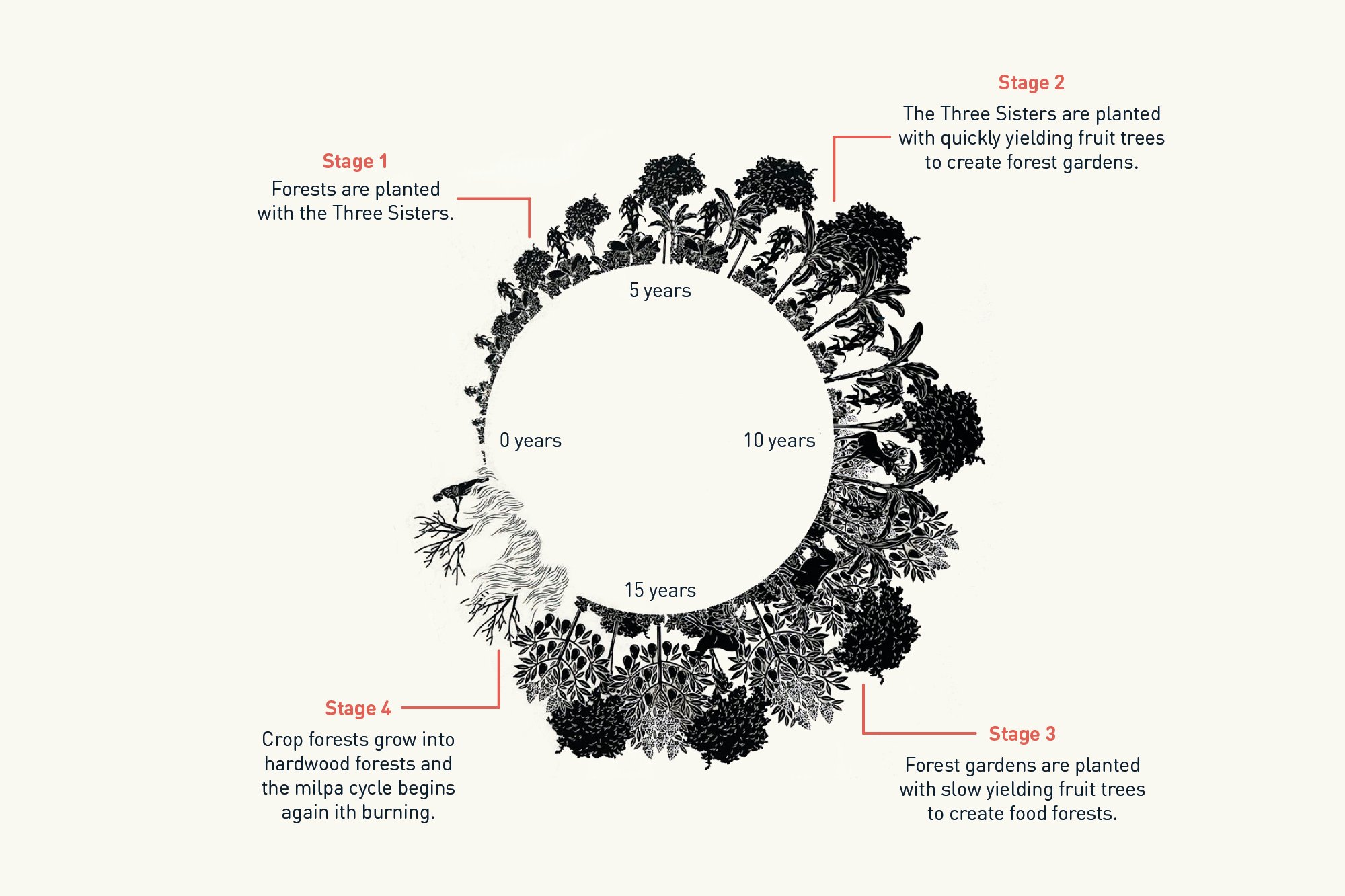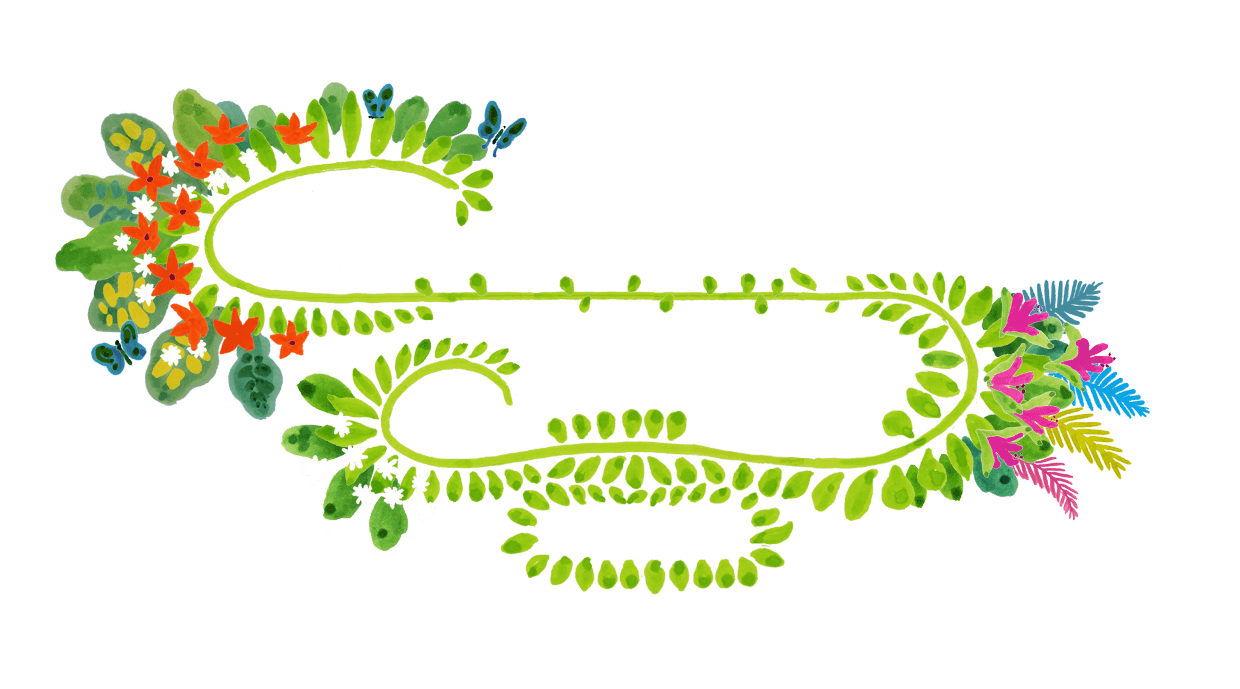
Insight
Maya Forest Gardens
The Mayan forest extends over millions of acres and is now the second largest rainforest in South America. While it was always thought of as mainly primary untouched forest, large areas are, in fact, the Mayan forest gardens.
For hundreds of years the Mayan implemented a sophisticated, sustainable agricultural system called the Milpa cycle. Vast areas of the rainforest are actually the end result of the Milpa cycle that looks to harvest the land over 20 year cycles, culminating with the land being returned to closed canopy forest.
Milpa is a form of agroforestry still skilfully practised by indigenous Mayan forest gardeners. The land is cleared and seeds are sown by hand; no tilling is ever used. Firstly, annuals such as the ‘three sisters’ (corn, beans and squash) along with up to 90 other edible species are planted.
Mayan Forest Structure

This is combined with the sowing of fruit and other edible tree species. After a few years the cropping transitions to harvesting the perennials as the young trees and shrubs mature.
In the meantime, the surrounding forest starts to naturally re-seed the land. The seedlings are carefully managed and any invasive ones removed.
After around a decade the natural tree species dominate and shade out the perennial growth. At this stage, the gardens are left to mature into forest and the canopy to close and to become complete.


The Milpa cycle would, by then, have started again in another area and continue with the harmonious integration of food production and forest regeneration.
Indigenous knowledge holds the key to our modern problems if we care to listen.





